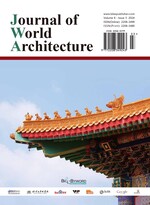Abstract
As an important part of urban construction, elderly-friendly construction is crucial to the formation of an elderly-friendly society, which has been widely recognized internationally. Especially after the COVID-19 pandemic, various organizations around the world have called for changes in public space and urban building planning, with an emphasis on the accessibility of green spaces. This underscores the complexity and difficulty of integrating vulnerable groups of the elderly into cities and using infrastructure and public space.
References
United Nations, 2013, World Population Ageing 2013, New York.
World Health Organization, 2007, Global Elderly-friendly Cities: A Guide, Geneva.
Kim K, Buckley TD, Burnette D, et al., 2022, Elderly-friendly Communities and Older Adults’ Health in the United States. International Journal of Environmental Research and Public Health, 19(15): 9292.
Plouffe L, Kalache A, 2010, Towards Global Elderly-friendly Cities: Determining Urban Features that Promote Active Aging. Journal of Urban Health, 87(5): 733–739.
Buffel T, Handler S, Philipson C, 2018, Elderly-friendly Cities and Communities – A Global Perspective. Policy Press, Bristol.
Chao STY, 2019, Planning for Greying Cities: Elderly-friendly City Planning and Design Research and Practice, Routledge, London.
World Health Organization, 2002, Active Ageing: A Policy Framework, Geneva.
Menec VH, Means R, Keating N, et al., 2011, Conceptualizing Elderly-friendly Communities. Canadian Journal on Aging, 30(3): 479–493.
Feldman P, Oberlink M, 2003, The Advantage Initiative: Developing Community Indicators to Promote the Health and Well-Being of Older People. Family and Community Health, 26(4): 268–274.
Manchester City Council, 2009, Manchester: A Great Place to Grow Older 2010–2020, Manchester.
Ryan J, Wretstrand A, 2019, What’s Mode Got to Do with it? Exploring the Links Between Public Transport and Car Access and Opportunities for Everyday Activities Among Older People. Travel Behaviour and Society, 14: 107–118.
Banister D, Bowling A, 2004, Quality of Life for the Elderly: The Transport Dimension. Transport Policy, 11(2): 105–115.
Woolrych R, Portella AA, Sixsmith J, et al., 2019, Place-Making with Older Adults: Towards Elderly-friendly Cities and Communities, viewed 3 June 2024, https://researchportal.hw.ac.uk/en/publications/place-making-with-older-adults-place-age-towards-elderly-friendly-cit
Delbosc A, Currie G, 2011, The Spatial Context of Transport Disadvantage, Social Exclusion and Well-Being. Journal of Transport Geography, 19(6): 1130–1137.
He SY, Cheung YHY, Tao S, 2018, Travel Mobility and Social Participation Among Older People in a Transit Metropolis: A Socio-Spatial-Temporal Perspective. Transportation Research Part A: Policy and Practice, 118: 608–626.
Settersten RA, 1999, Lives in Time and Place: The Problems and Promises of Developmental Sciences. Baywood Publishing, New York.
Foster GT, Wenn DEN, Harwin WS, et al., 1998, Generating Virtual Environments to Allow Increased Access to the Built Environment. The International Journal of Virtual Reality, 3(4): 11–19.
Phillips J, Walford N, Hockey A, et al., 2013, Older People and Outdoor Environments: Pedestrian Anxieties and Barriers in the Use of Familiar and Unfamiliar Spaces. Geoforum, 47: 113–124.
King AC, Sallis JF, Frank LD, et al., 2011, Aging in Neighborhoods Differing in Walkability and Income: Associations with Physical Activity and Obesity in Older Adults. Social Science & Medicine, 73(10): 1525–1533.
Mitchell L, Burton E, 2006, Neighbourhoods for Life: Designing Dementia-Friendly Outdoor Environments. Quality in Ageing and Older Adults, 7(1): 26–33.
